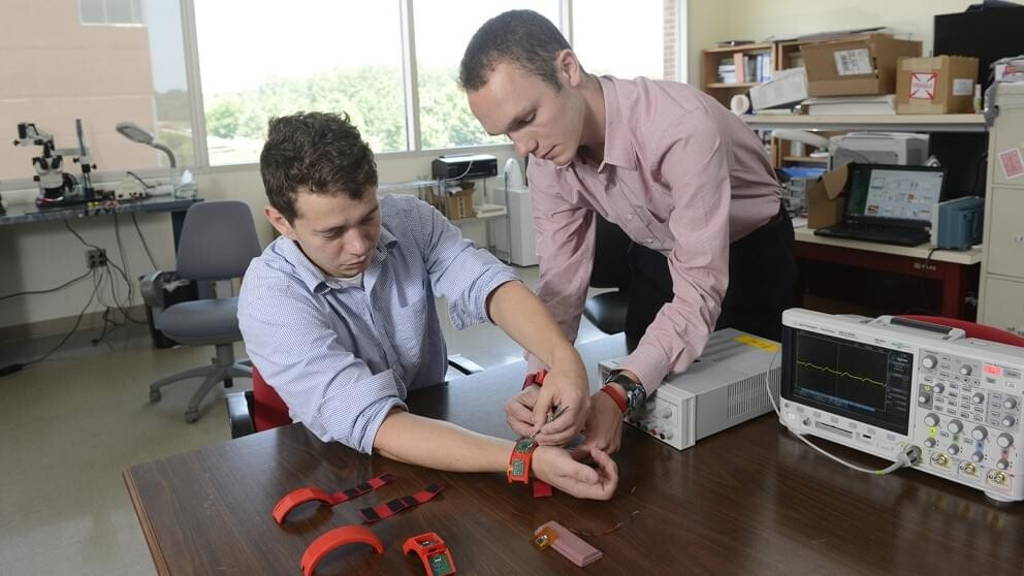Recently for example, a wearable patch was introduced that can help to predict a heart attack. Now, researchers at the North Carolina State Universityare working on a wearable system that may help predict the onset of asthma attacks, letting patients avoid risky places and situations.
Currently the system is called Health and Environmental Tracker (HET). It consists of a wrist-worn device, a stick-on chest patch, and a spirometer. Its goal is to let people who suffer from asthma, avoid risky places and situations.
The patch and tracker combine to collect data on the user’s heart and respiratory rates, e.g. how someone is moving, blood oxygenation, skin impedance, wheezing in the lungs. Next to this ‘live’ environmental factors such as temperature and humidity, the amount of ozone and volatile organic compounds in the air are taken into account.
The spirometer is used a few times a day to assess lung function. All the obtained data is then crunched by custom software to provide evaluation and guidance to the patient throughout the day.
Currently the system is called Health and Environmental Tracker (HET). It consists of a wrist-worn device, a stick-on chest patch, and a spirometer. Its goal is to let people who suffer from asthma, avoid risky places and situations.
The patch and tracker combine to collect data on the user’s heart and respiratory rates, e.g. how someone is moving, blood oxygenation, skin impedance, wheezing in the lungs. Next to this ‘live’ environmental factors such as temperature and humidity, the amount of ozone and volatile organic compounds in the air are taken into account.
The spirometer is used a few times a day to assess lung function. All the obtained data is then crunched by custom software to provide evaluation and guidance to the patient throughout the day.






